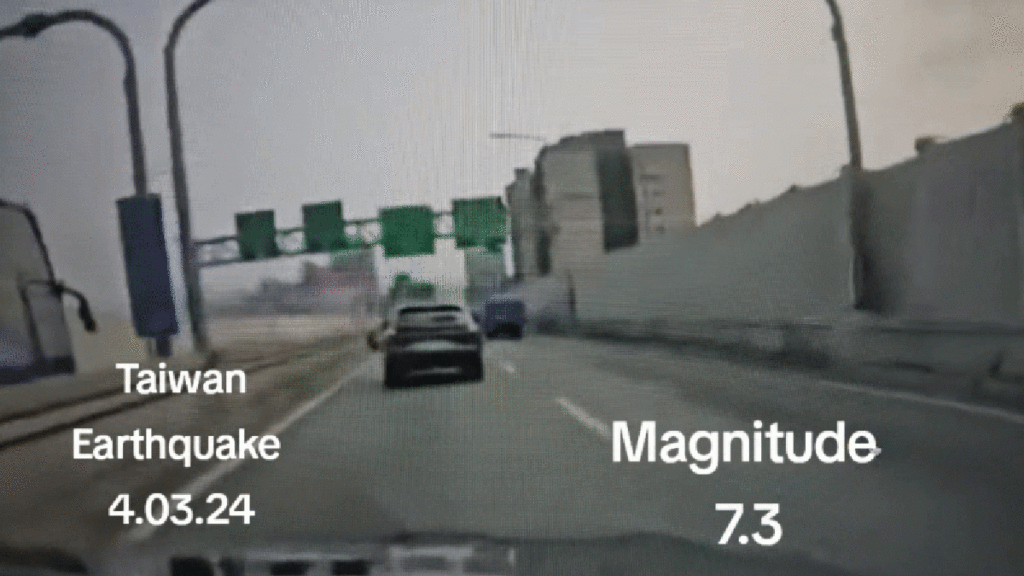What To Do If An Earthquake Hits While You're Driving

Taiwan was tragically struck by a huge 7.4 magnitude earthquake Wednesday morning and upon seeing videos in the news, I suddenly realized that I don’t know what to do if an earthquake hits while I’m driving. I’ve grown up in the Los Angeles area my whole life, and we had earthquake drills in school that taught us to duck and cover under a sturdy surface, but no mention was made about how to react if you’re behind the wheel.
Is The New Toyota Land Crusier A Real Land Cruiser? | Jalopinions
In the event that you are driving when an earthquake hits, the U.S. Geological Survey says to move out of the way of traffic and stop your car away from any overpasses, light posts, or trees, and if you’re on a bridge, do not stop on the bridge.
AAA offers a more in-depth set of guidelines for how to handle an earthquake from behind the wheel, and how to proceed once the shaking stops:
1. Make your way to the side of the road and set the parking brake
Avoid stopping under overpasses or power lines, on bridges, or near signs and other hazards that could fall on your vehicle. Stay inside the vehicle until the shaking stops. If you can continue driving, proceed carefully because you may encounter fallen debris and cracked or shifted pavement. Watch for emergency vehicles, and, as usual, pull over to let them through.
2. If a power line falls on or near your car, do not get out
Also, do not touch metal items inside, such as your seat belt buckle, the steering wheel, or the door handle, which could result in electrocution. Instead, stay put, call 911, then place your hands on your lap. “Stay inside until a trained person arrives to remove the wire,” Burdick says. Rescue personnel may be delayed in a major disaster.
3. If you’re driving on a coastal road, tune in to a local radio station and head inland
Listening to a local radio station will keep you apprised of tsunami warnings and evacuation routes. Keep in mind that a tsunami can travel inland as far as 10 miles. An earthquake caused by the San Andreas fault is unlikely to result in a tsunami because it is so far from the coast, but an earthquake created by an oceanic fault could trigger a massive wave. A map of tsunami zones is available here.
4. Fuel up
If power is out, gas stations will be unable to dispense fuel, so always keep your tank at least a quarter full.
5. Prepare an earthquake-survival kit for each of your vehicles
Ready America and Quake Kare sell preassembled kits and offer discounts to AAA members. These are some items to include.
Bottled water, class ABC extinguishers (equipped to put out electrical, grease, and gas fires), first aid kit and manual, emergency-signal devices (whistle, light sticks, battery-type flasher, reflector, mirror, etc.), reflective triangles to make your vehicle more visible, flashlight with fresh batteries, or a hand-crank flashlight, thick work gloves, a compass, jumper cables, duct tape, sneakers, tool kit or a multipurpose utility tool, rope for towing, rescue, etc., and paper maps (because you might not have cell service). A variety of city and regional maps are available for free at your local AAA branch.
As long as you are not traveling on or under a bridge during an earthquake, the safest thing to do is to slowly stop your car in a relatively open space out of the way of traffic and wait out the quake.
There are no guidelines that specifically address what to do if an earthquake strikes while you’re driving on or under a bridge or overpass, aside from the AAA guideline that says, “do not stop on a bridge or overpass unless it is safe to do so.” Which…who knows what that might mean Some of the biggest hazards during earthquakes are objects falling, including trees, buildings, and broken glass, so the safest place to be during an earthquake would likely be an open field with no trees or structures that could fall.
Realistically though, earthquakes strike with no warning. When one happens, react to your immediate situation in the safest way possible. For more information on how to respond to an earthquake, refer to the CDC’s guidelines here.







